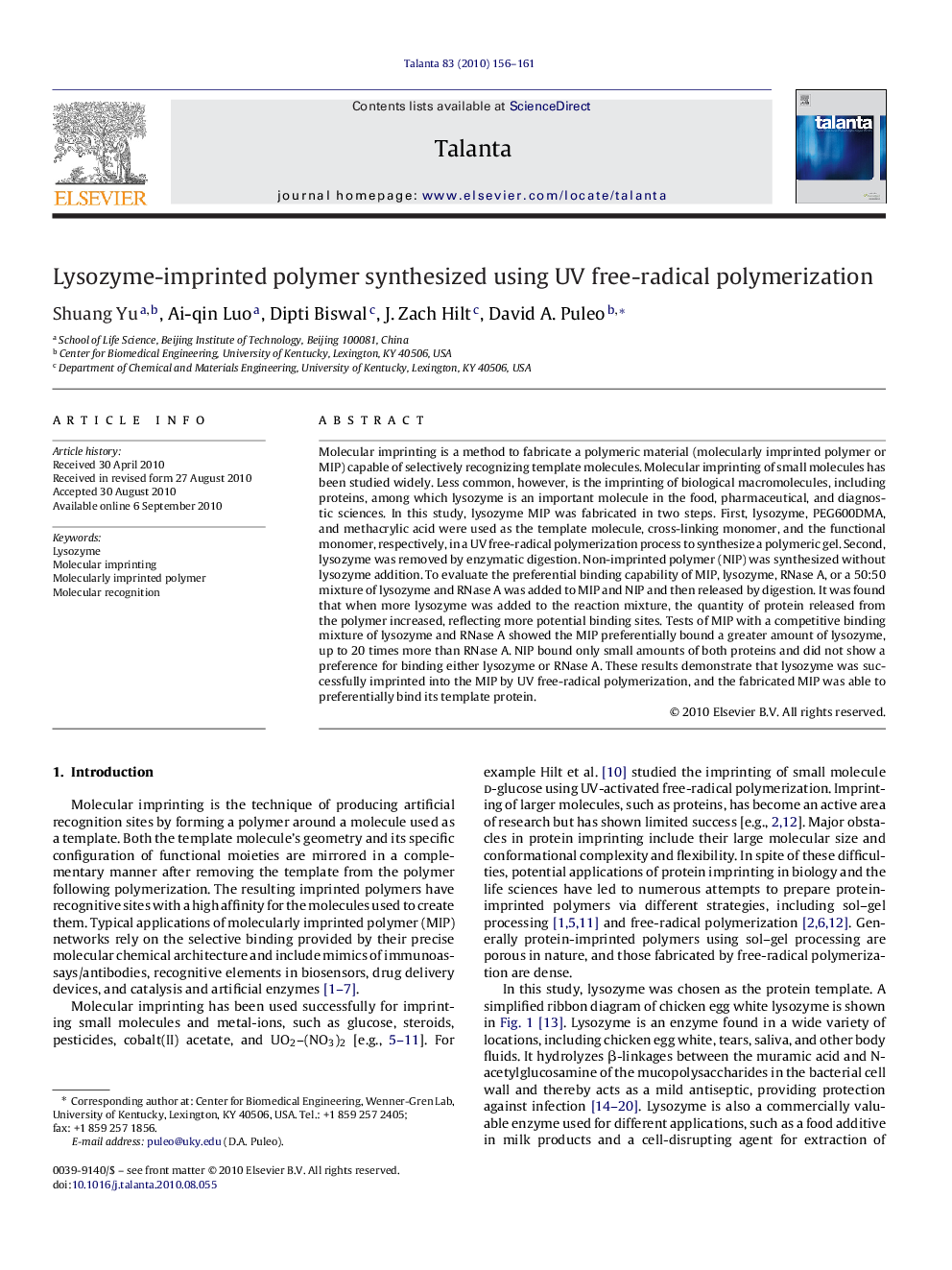| Article ID | Journal | Published Year | Pages | File Type |
|---|---|---|---|---|
| 1242474 | Talanta | 2010 | 6 Pages |
Molecular imprinting is a method to fabricate a polymeric material (molecularly imprinted polymer or MIP) capable of selectively recognizing template molecules. Molecular imprinting of small molecules has been studied widely. Less common, however, is the imprinting of biological macromolecules, including proteins, among which lysozyme is an important molecule in the food, pharmaceutical, and diagnostic sciences. In this study, lysozyme MIP was fabricated in two steps. First, lysozyme, PEG600DMA, and methacrylic acid were used as the template molecule, cross-linking monomer, and the functional monomer, respectively, in a UV free-radical polymerization process to synthesize a polymeric gel. Second, lysozyme was removed by enzymatic digestion. Non-imprinted polymer (NIP) was synthesized without lysozyme addition. To evaluate the preferential binding capability of MIP, lysozyme, RNase A, or a 50:50 mixture of lysozyme and RNase A was added to MIP and NIP and then released by digestion. It was found that when more lysozyme was added to the reaction mixture, the quantity of protein released from the polymer increased, reflecting more potential binding sites. Tests of MIP with a competitive binding mixture of lysozyme and RNase A showed the MIP preferentially bound a greater amount of lysozyme, up to 20 times more than RNase A. NIP bound only small amounts of both proteins and did not show a preference for binding either lysozyme or RNase A. These results demonstrate that lysozyme was successfully imprinted into the MIP by UV free-radical polymerization, and the fabricated MIP was able to preferentially bind its template protein.
